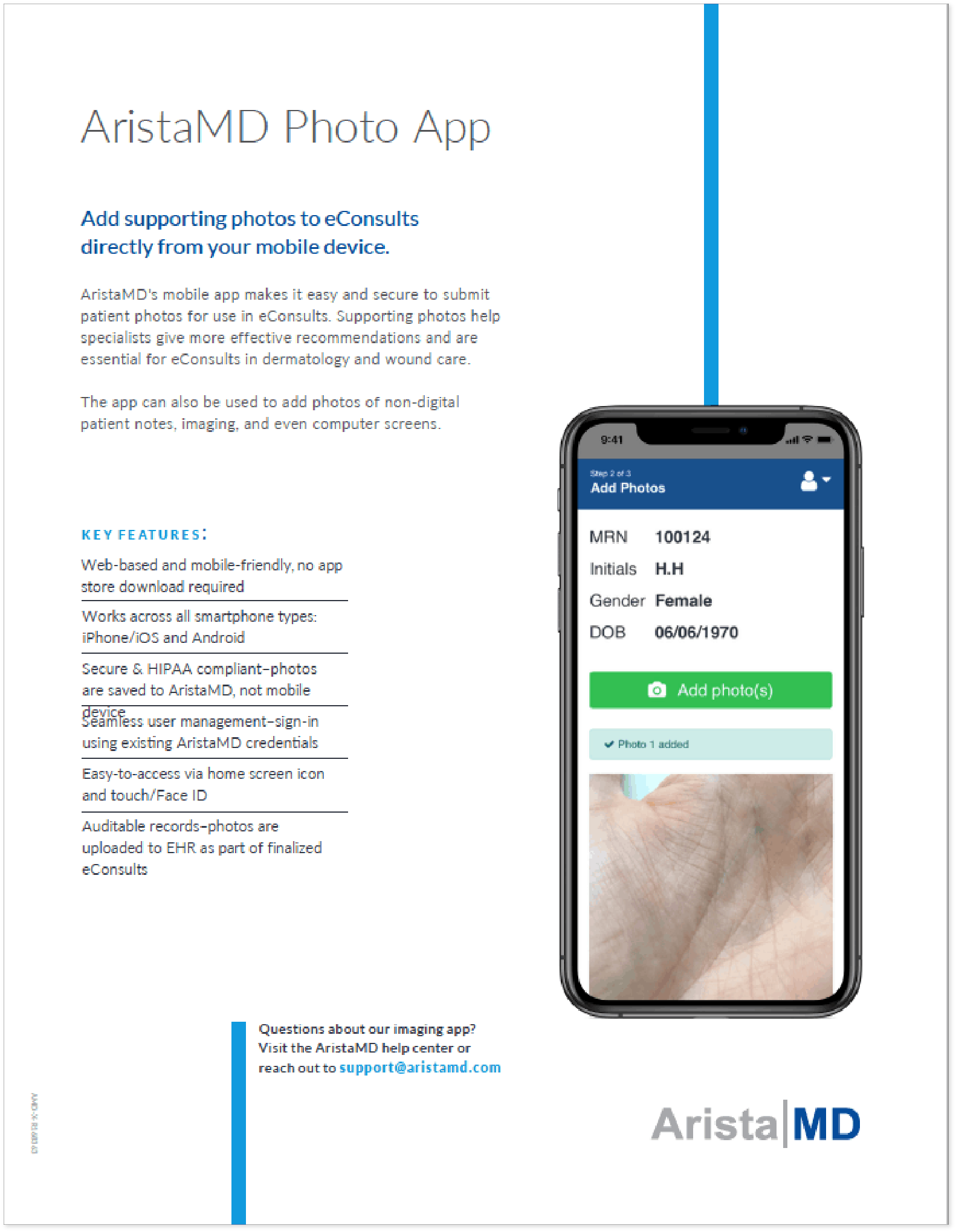Telehealth Photo Application for Dermatology & Wound Care
Telehealth Photo Application Features:
- Secure & HIPAA compliant–photos are saved to the AristaMD telehealth photo application, not a mobile device
- Web-based and mobile-friendly–no app store download required
- Works across all smartphone types–iPhone/iOS and Android
- Seamless user management–sign in using existing AristaMD credentials
- Easy to access via home screen icon and touch/face ID
- Auditable records–photos are uploaded to EHR as part of finalized eConsults
Request a Demo
Benefits of Store-and-Forward, Asynchronous Telehealth Solutions
What is Asynchronous Telehealth?
In the pursuit of healthcare’s holy grail (efficient, effective, and high-quality care), it’s important to assess all modalities of telehealth solutions, especially asynchronous telehealth (also known as store-and-forward technology), which can provide key support to the framework of strategies to improve access, efficiency, outcomes, as well as patient and provider experience. Learn more in this deep dive on asynchronous telehealth.
Asynchronous telehealth is defined as the transmission of recorded health history through an electronic communications system to a practitioner, usually a specialist, who uses the information to evaluate the case or render a service outside of real-time or live interaction — thus enabling providers to access specialist input within their own workflow.
The most common form of asynchronous telehealth is eConsults, commonly used in radiology, pathology, dermatology, and ophthalmology. In ophthalmology, for instance, eye screenings for diabetic retinopathy can be captured digitally by retinal cameras and transmitted to a specialist for review. Primary care providers use our telehealth photo application to send images of patient skin conditions to a remote dermatologist. These specialists retrieve the photo from the secure platform and send back recommendations.
The eConsult segment of telehealth has improved access, quality, satisfaction, and efficiency for many patients by reducing unnecessary referrals and allowing patients to be treated more often.


